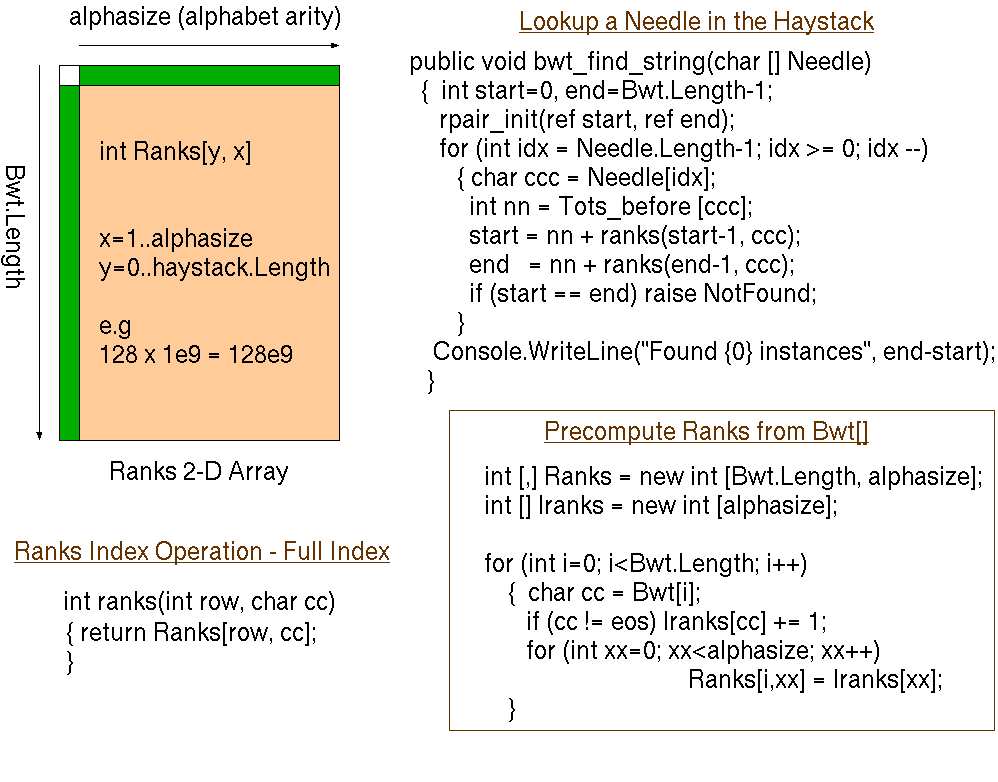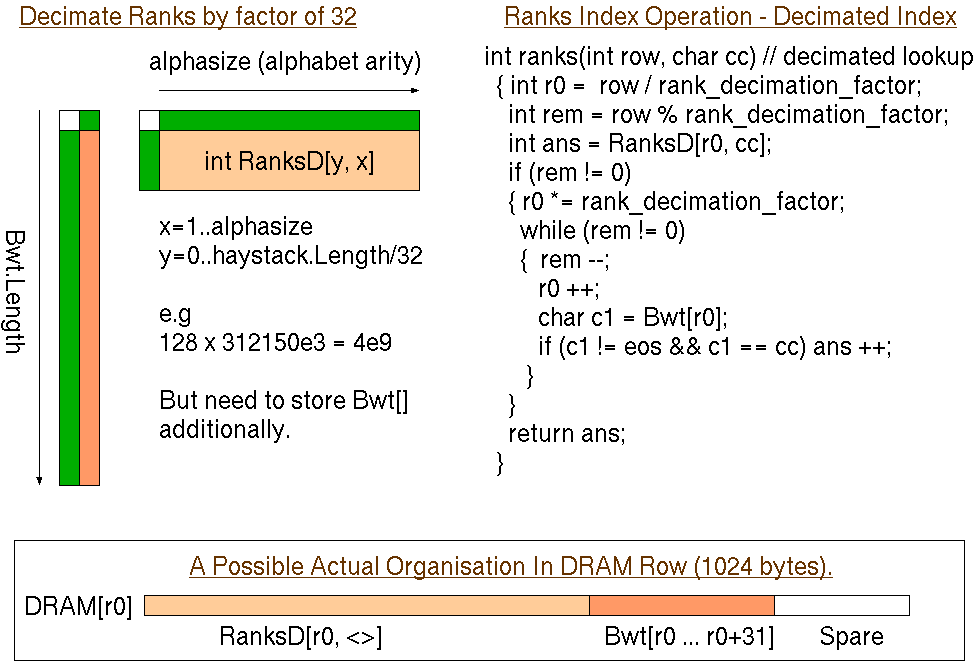
Lookup procedure when string searching using BWT.
The BWT of a string is another string of the same length and alphabet. According to the definition of a transform, it is information preserving and has an inverse. We shall not define it in these notes.
The following code makes efficient perfect string matches of needles in a given haystack using the BWT. It uses lookup in the large Rank array that is pre-computed from BWT which itself is a precomputed transform of the haystack. It also uses the Tots_before array, but this is very small and easily fits in BRAM on an FPGA. The Rank array is 2-D, being indexed by character, and contains integers ranging up to the haystack size (requiring more bits than a character from the alphabet).

The problem can be that, for big data, such as Giga-base DNA genomes, the Rank array may be too big for available the DRAM.
The solution is to decimate the Rank array by some factor, such as 32, and then only store every 32nd row in memory. When lookup does not fall on a stored row, the row's contents are interpolated on-the-fly. This does require the original BWT-transformed string is stored, but this may well be useful for many related purposes anyway.

Access patterns to the Rank array will exhibit no spatial or temporal locality (especially at the start of the search when start and end are well separated. If only one bank (here we mean channel) of DRAM is available, then random access delays dominate. (The only way to get better performance is task-level parallelism: searching for multiple needles at once, which at least overcomes the round-trip latency to the DRAM, but not the low performance intrinsic to no spatial locality).
However, one good idea is to store the BWT fragment in the same DRAM row as the ranking information. Then only one row activation is needed per needle character.
For what factor of decimation is the interpolator not on the critical path? This will depend mainly on how much the HLS compiler chooses (or is commanded via pragmas) to unwind it.
In general, when aligning data in DRAM rows, sometimes a pair of items that are known to both be needed can be split into different rows. In which case storing everything twice may help, with one copy offset by half a row length from the other, since then it is possible to manually address the copy with the good alignment. »Pico Computing White Paper»Kiwi Implementation
| 26: (C) 2012-18, DJ Greaves, University of Cambridge, Computer Laboratory. |